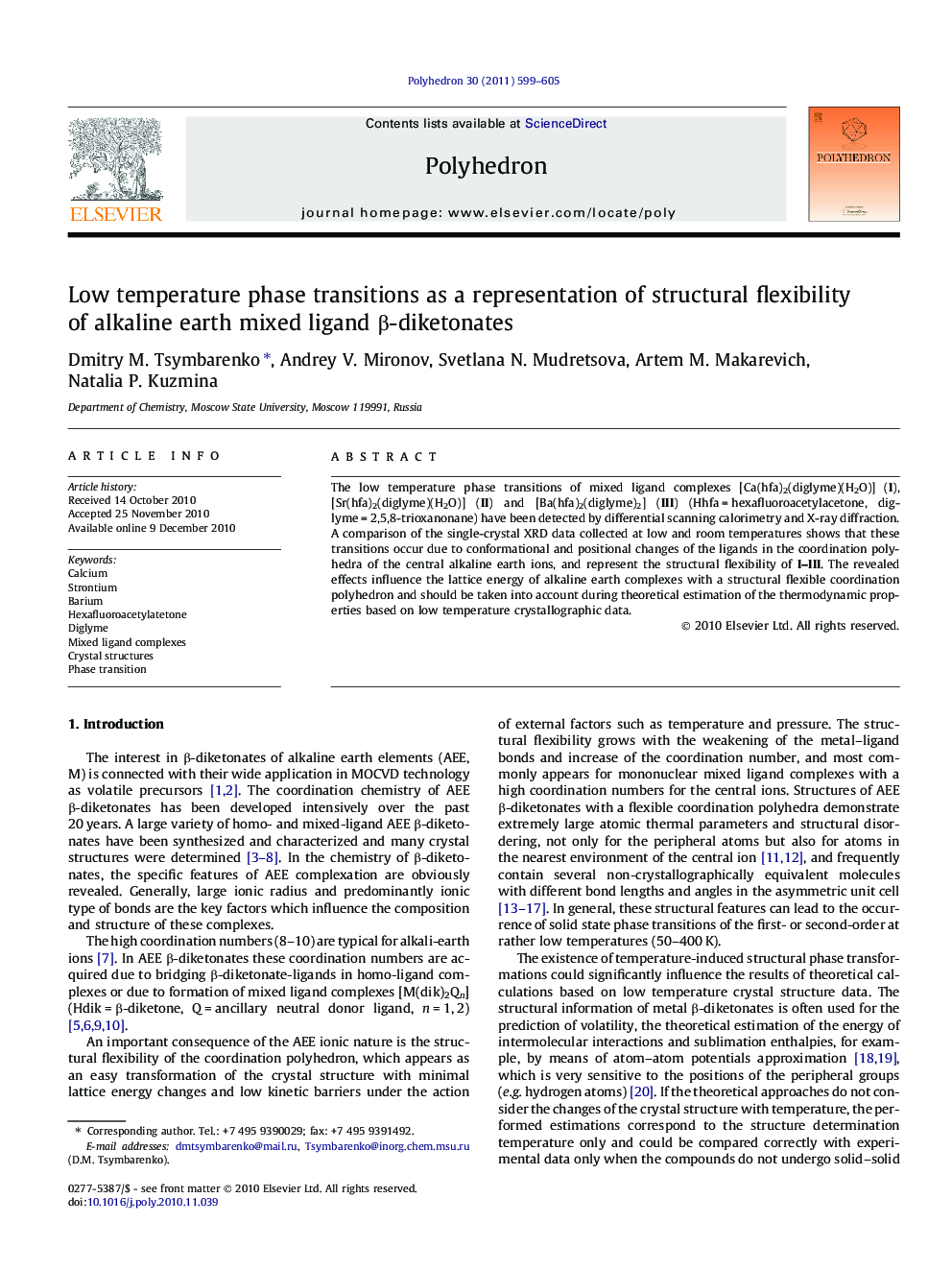| کد مقاله | کد نشریه | سال انتشار | مقاله انگلیسی | نسخه تمام متن |
|---|---|---|---|---|
| 1338357 | 979664 | 2011 | 7 صفحه PDF | دانلود رایگان |

The low temperature phase transitions of mixed ligand complexes [Ca(hfa)2(diglyme)(H2O)] (I), [Sr(hfa)2(diglyme)(H2O)] (II) and [Ba(hfa)2(diglyme)2] (III) (Hhfa = hexafluoroacetylacetone, diglyme = 2,5,8-trioxanonane) have been detected by differential scanning calorimetry and X-ray diffraction. A comparison of the single-crystal XRD data collected at low and room temperatures shows that these transitions occur due to conformational and positional changes of the ligands in the coordination polyhedra of the central alkaline earth ions, and represent the structural flexibility of I–III. The revealed effects influence the lattice energy of alkaline earth complexes with a structural flexible coordination polyhedron and should be taken into account during theoretical estimation of the thermodynamic properties based on low temperature crystallographic data.
The low temperature phase transitions of the mixed ligand complexes [Ca(hfa)2(diglyme)(H2O)], [Sr(hfa)2(diglyme)(H2O)] and [Ba(hfa)2(diglyme)2] (Hhfa – hexafluoroacetylacetone, diglyme – 2,5,8-trioxanonane) have been detected by differential scanning calorimetry and X-ray diffraction. Changes of the crystal structures due to the phase transitions are discussed.Figure optionsDownload as PowerPoint slideResearch highlights
► Low temperature phase transitions of alkaline earth complexes were detected.
► The thermal-induced phase transitions were studied by DSC and X-ray diffraction.
► Solid–solid phase transitions lead to structural changes in molecules.
► Structure transformations lead to an increase of the molecular and lattice symmetry.
Journal: Polyhedron - Volume 30, Issue 4, 11 March 2011, Pages 599–605